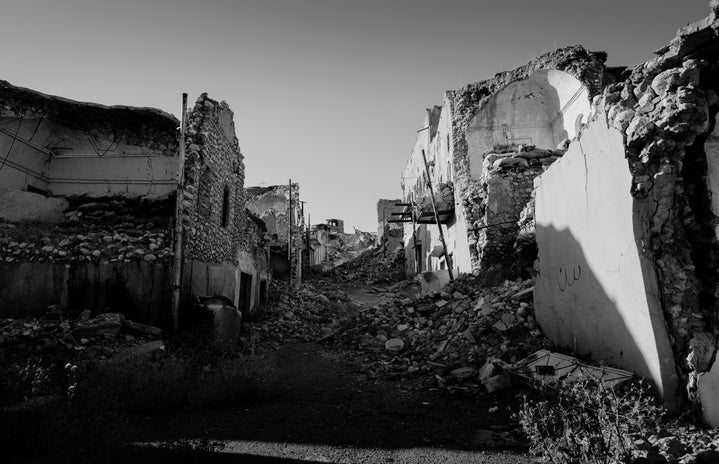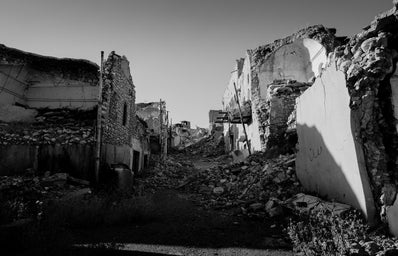Tensions are at an all-time high with Gaza’s densely populated regions witnessing significant devastation as Israel retaliates against the attacks by Hamas militants.
How Did We Get Here?
On October 7, a barrage of rockets fired by militants from Gaza rained on Israeli towns. An unprecedented infiltration by Hamas gunmen into Israeli territory saw them causing significant civilian and military casualties. This marked an audacious escalation from Hamas’s technique, prompting a fierce response from Israel.
Justifying its actions, Hamas named this operation “Al-Aqsa Storm,” claiming it was retaliation against perceived Israeli transgressions, including the siege on Gaza.
The Israeli Reaction
Israel, in response to Hamas’s attacks, initiated “Operation Swords of Iron.” Their retaliation was intense; airstrikes in a week equaled the entire count during the 50-day-long 2014 Gaza-Israel conflict. The Israeli Defense Forces (IDF) have also advised Gazan civilians to evacuate, hinting at a larger, possibly ground-level operation.
A Humanitarian Catastrophe in Gaza
The blockade by Israel, coupled with an existing Egyptian blockade, has crippled the daily life in Gaza. Vital resources like electricity, water and food have been curtailed. The already distressed medical infrastructure in Gaza faces further challenges with the potential blackout of hospitals due to fuel shortages.
Moreover, the Rafah Crossing, the only potential relief route from Gaza to Egypt, remains closed.
Understanding Hamas
Born out of the Muslim Brotherhood in 1987, Hamas is a staunch opponent of Israel’s existence. The group has resisted efforts, such as the 1993 Oslo Accords to bring peace to the region, setting itself apart from the Palestinian Authority (PA), which recognizes Israel.
A Historical Context
The Israeli-Palestinian conflict traces its roots back to before the creation of Israel in 1948. Over the years, thousands have lost their lives due to this hatred. Gaza, mainly, has been at the heart of this conflict. It was captured by Israel in the 1967 war from Egypt, only for Israel to withdraw in 2005. The region then fell under Hamas control in 2007, leading to a stringent blockade by both Israel and Egypt.
Global Repercussions
The recent escalation between Hamas and Israel has sparked significant reactions worldwide. Following the unprecedented attacks, there have been a multitude of global demonstrations, in support of both Israel and Palestine.
Major landmarks like Paris’s Eiffel Tower, New York’s Empire State Building and Sydney’s Opera House have been illuminated in the colors of the Israeli flag as a symbol of solidarity.
On the other side, there’s a palpable frustration among pro-Palestinian supporters who see a disparity in global empathy, especially considering the humanitarian crisis in Gaza.
The conflict has not only rekindled centuries-old tensions but has also steered the world’s focus back to one of its most volatile geopolitical flashpoints.
The Road Ahead
Israel seems prepared for an extended conflict, possibly indicating a large-scale ground operation in Gaza.
Joe Biden’s recent decisions to cancel domestic trips and the potential visit to Israel underscore the international community’s anxiety over the situation. With Iran’s shadow looming large over the conflict due to its alleged backing of Hamas and Israeli skirmishes with Hezbollah at the Lebanon border, the Middle East finds itself at a dangerous crossroads.
The overarching hope is for diplomacy to triumph over further violence, preventing more loss of innocent lives.
How is this a Humanitarian Issue?
While rooted in political and territorial disputes, the conflict has unveiled a massive humanitarian crisis that cannot be ignored. As the two factions continue their military confrontations, the civilians, particularly in the Gaza Strip, bear the brunt of the devastation.
The Gaza Strip, even before the recent escalations, was in an unstable state. Long-standing blockades have meant that necessities like clean water, electricity and medical supplies have been scarce. The area, often called the world’s largest open-air prison, has seen its infrastructure crumble, with healthcare facilities barely functioning and a significant portion of its population dependent on international aid.
Furthermore, the directive for over a million Gazans to move southward in anticipation of a possible ground offensive raises alarm. Such a massive internal displacement, without the infrastructure to support it, could lead to a catastrophic loss of life due to the direct impact of the conflict and indirect effects like lack of shelter, food, clean water and medical care.
The current situation also has a profound psychological and emotional toll on the region’s residents, especially children. Exposure to violence, the loss of loved ones and the constant state of fear can have lasting traumas. Many children in Gaza have witnessed multiple conflicts in their short lives and the psychological scars from these events can last a lifetime.
This crisis is not just about numbers, territories or political gains; it’s about real people, real lives and the fundamental human rights being denied to them.
The international community’s role is crucial, while diplomatic efforts to cease hostilities are essential, so is the immediate need to address the humanitarian crisis unfolding in the region. Aid, medical supplies and other essentials must be allowed to reach those in need, and the safety of civilians must be prioritized above all else.
The Israel-Hamas war is a stark reminder that in any armed conflict, while factions might aim at each other, innocent civilians often suffer the most.


